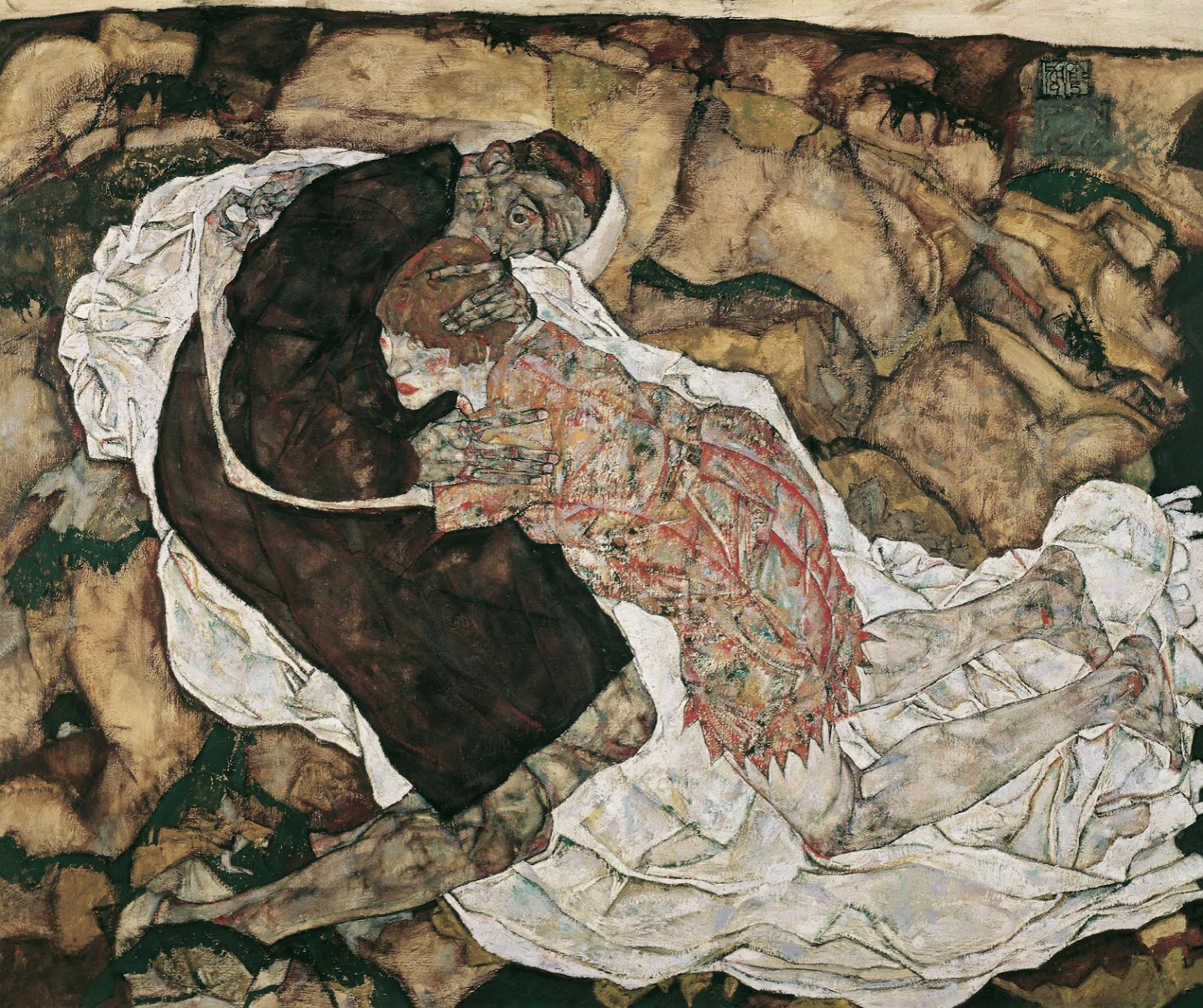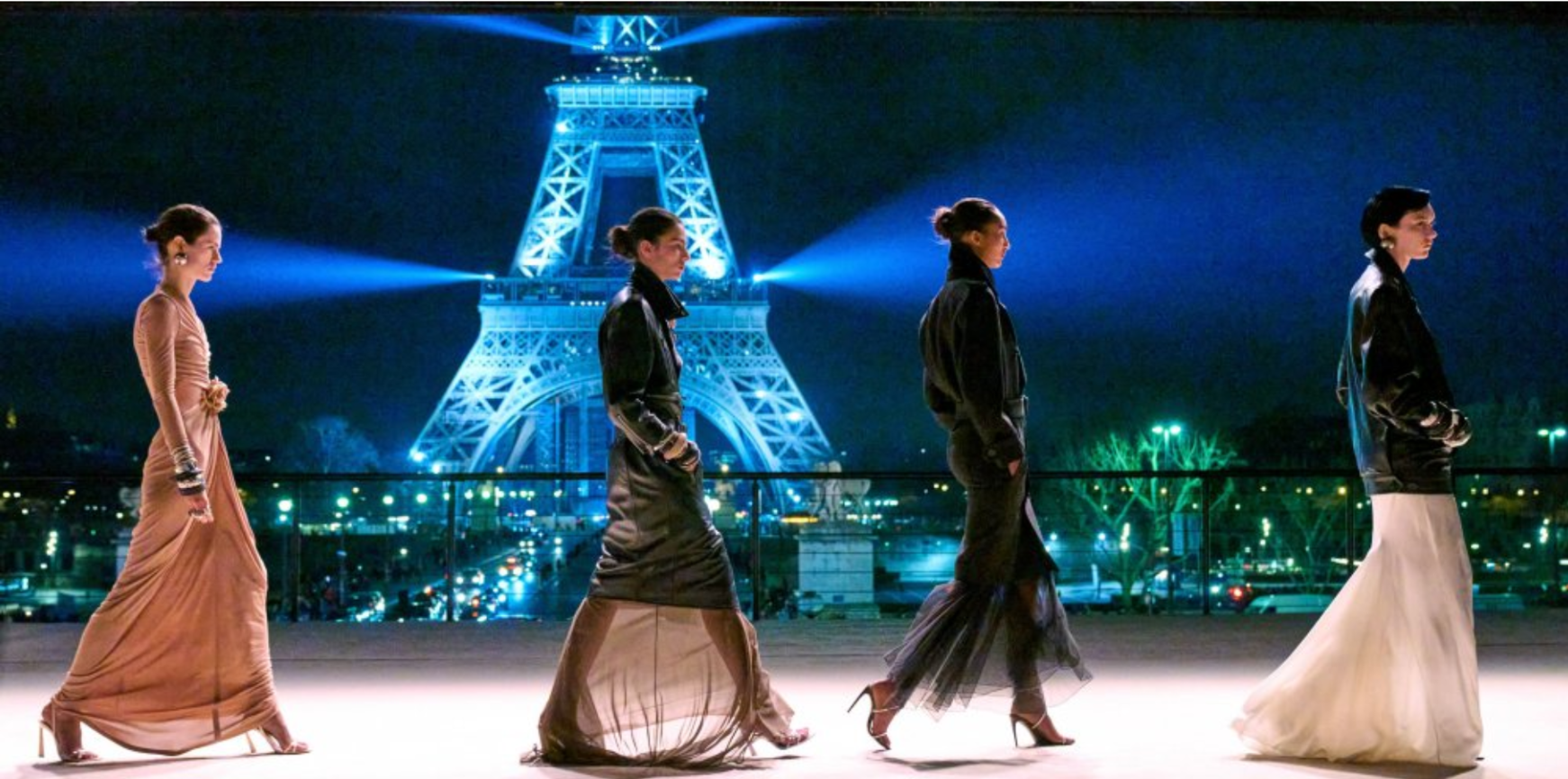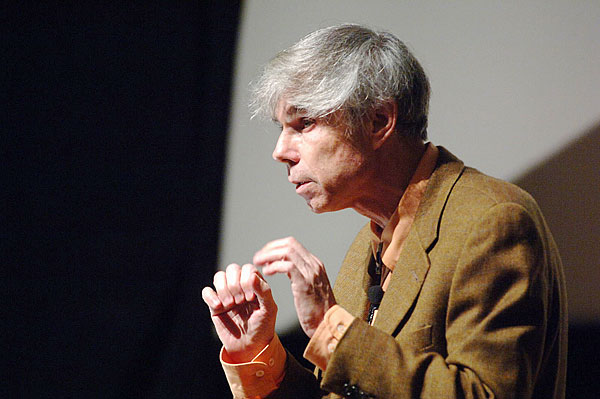By Jiei Yamasato, Year 13
When I first saw the cover of NHB edition of the play Death and the Maiden (1991) by Ariel Doefman, I was instantly drawn to the image of a young woman with lush long hair and intertwining legs embracing and kissing a skeleton.

The white in the background matches the maiden’s white skin, while the rectangle composed of two right angle triangles of different shades of grey match the skeleton. Additionally, the placement of the rectangle on an otherwise pure background evokes a sense of invasion, which is more poignant on the image, where the limb bones of the skeleton create black stripes resembling scars on the otherwise pure skin of the maiden. The two colours may also reflect the ambiguity of the two figures’ emotions. The maiden’s eyes are closed, showing acceptance of this personification of death, but her firm grasp on the skeleton’s neck alongside her kiss shows an assertiveness to the maiden, suggesting a slight hint of dominance the maiden is attempting to impose. On the other hand, the skeleton’s expressions are hidden, making his intentions undecipherable too. This prompts the question; is death comforting the maiden, or is he seducing her with nefarious intentions?
The cover beautifully echoes Paulina and Roberto in the play. Paulina who was too obedient, was kidnapped and taken to a prison where she would be tortured and raped by Dr. Miranda. Almost the entirety of the play depicts a later encounter between the two where Paulina, now married to Gerardo, assumes a man invited over to their flat by Gerardo for helping him with a flat tire is Dr. Mirando. Paulina aims to get Roberto to confess on what he has done, and get revenge. Mimicking the harassment Roberto did to Paulina, she ties Roberto up, and threatens him to confess in a very intimate way, going to the bathroom with him and touching his body. Paulina takes a dominating position in the interaction, which she maintains through the usage of a gun, pointing it at both Gerardo and Roberto, and even firing. Whether Roberto is Dr. Miranda is unknown to Gerardo and the audience for the first half of the play. Even during Roberto’s confession, he claims to have believed that the rape and the music was alleviating the prisoners’ suffering, however at this point it is clear that Roberto is unreliable and is capable of lying as he does of his identity. Furthermore, the ending of the play depicts Roberto in a “phantasmagoric” light, making it ambiguous whether he is real or an illusion, and hence whether Paulina killed Roberto or not. The interactions between the scarred yet dominant Paulina and Roberto with ambiguous motives is perfectly represented by the cover of the play.

However, throughout history, there have been many more artworks with the title or motif of “death and the maiden”. In the late middle ages, a genre of artworks called the Danse Macabre was popular around France, where death personified by skeletons would be portrayed dancing as they take a human to their grave. Popularised with the rise of widespread diseases such as the black death, these artworks acted as a reminder for the idea of the universality of death, or famously in Latin, “memento mori”. These would later inspire artists during the German Renaissance where they would exaggerate the tragedy of inescapable death through the usage of intense contrast and a touch of eroticism. They would pair a young lustrous woman with a skeleton with features of an old man such as grey hair and dry skin. By contrasting the two figures, the beauty and desirability of the female body is further highlighted. While the Danse Macabre depicted those in power such as kings and popes, workers, and children, German Renaissance paintings depicted beautiful maidens, shifting the subject of the message from the viewer themselves to the beauty around them. This can be taken as a representation of the shift from artworks used as a means of communicating stories such as allegories or religious texts to being a valuable item of its own, promoting visual beauty.

In 1774, the German poet Matthias Claudius would write Death and the Maiden, imagining a dialogue between the two figures.
Girl
Over! Oh over!
Go wild boneman!
I’m still young, go dear!
And don’t touch me.
Death
Give your hand, you beautiful and delicate figure!
I am a friend and do not come to punish:
Be of good cheer! I’m not wild.
You shall sleep softly in my arms.
The poem adds a dynamic between the two figures not present in the paintings. The girl, like in the paintings, is afraid of death both literally and metaphorically. However death, unlike in the paintings, reassures and comforts the girl, helping her accept her inescapable fate. The girl does not respond. This addition shows the poetic intentions behind the author, possibly mourning over a loss of a loved one and wishing them a peaceful death, or his own wish to accept and come to terms with his own mortality.
Early Austrian romanticist composer Franz Peter Schubert would then compose a short piece of music to accompany this poem in 1817, titled Death and the Maiden, Op. 7, No. 3. In this composition, Schubert would add a simple march to the beginning and end of the composition. The march at the beginning is set in the key of D minor, reflecting the maiden’s fear and anxiety towards death. The march at the end, while being essentially an identical melody, is set instead in the key of D major, creating a positive and peaceful tone, likely implying the girl has willingly accepted her fate. Through his simple melodic addition, Schubert adds a layer of beauty and emotional vibrance to the poem.
A section of Death and the Maiden makes a reappearance in another work Schubert composed 7 years later. In his String Quartet No. 14 in D minor, D.810, he reinterprets the march for the second movement. This has given the piece the colloquial name of “Death and the Maiden”. Now suffering with syphilis, poverty, and oppression from the police state, death felt much closer and personal to Schubert. Composed of four movements, this string quartet explores the theme of death. The first movement is brisk, and with a powerful intro evokes a feeling of fear, perhaps similar to that of the maiden upon her initial encounter with death. The second movement utilises melodies from Schubert’s earlier song, specifically the opening march and parts from the second verse where death speaks. The choice of melodies imported over clearly indicate the symbol of death, and the lack of conclusion that the song had in the form of the ending march in a major key indicates that here, perhaps death is unpersuasive. The third movement has a brighter colour to it overall, borrowing sections from one of Schubert’s German dances. This provides a break from the drama, possibly a sense of hope, before the fourth movement brings it back with a fast tempo, dissonance, and mirrored melodies from the first movement, creating despair.

The real threat of death that was looming over Schubert is what made this painfully beautiful piece inspiring and moving to so many people over centuries. A group of the said people happened to be Expressionist artists from the late 19th to early 20th centuries. Also a Symbolist artist, one of the artists was Evard Munch, with his aforementioned sketch and painting Death and the Maiden (1893-4). Munch lost many members of his family due to tuberculosis including his sister Sophie who died at 15 years of age. The internal struggles stemming from Munch’s personal experiences were expressed in his paintings, where death and youth became common themes. This painting is a great example of Munch’s ability to use colour to evoke a feeling of concern and discomfort by the potential vulnerability of female nude figures, expressing the artist’s personal struggles. As previously discussed, Munch’s interpretation of the motif is a very fitting match to Dorfman’s play. However, as is with the motif of Death and the Maiden, contrast brings out the true colours of the two parties stronger than each of them independently. Egon Schiele’s Death and the Maiden (1915) contrasts the play in an intriguingly revealing way.

Egon Schiele is another Expressionist painter, born in Austria. Schiele’s take on the motif is quite distinct from the other paintings in that the maiden is dressed, and what we are led to assume is death, is not depicted as a skeleton, but a man. In fact, upon observing Schiele’s other works, it becomes evident that the two figures depicted look familiar to Schiele, the artist himself, and Wally Neuzil, Schiele’s lover. Likely introduced to each other by Schiele’s then mentor Klimt, Neuzil was extremely supportive of Schiele, who never received any recognition for his work while he was alive, only posthumously. After Schiele was arrested for exposing children to pornographic material, Neuzil would supply Schiele in prison with food, water, and most importantly, art supplies. It was therefore shocking news when Schiele would make the decision to marry not Neuzil, but Edith Harms, as she was more economically stable and socially acceptable. Although Schiele offered economical support for Neuzil, the two would split and never meet after the letter notifying of the engagement. Neuzil would then go on to work for the military as a nurse, where she would catch and pass away from scarlet fever.

Schiele’s painting turns the Klimtian landscape into a haunting rocky hill, placing two disfigured figures atop a white cloth. The figures’ clothes and skin are grotesquely coloured with hints of green, as if infested by the moss on the rocks. Neuzil, or the ‘maiden’ is hunched over, with her abnormally long arms, seeming even thinner than they are due to half being covered by cloth, longing to embrace Schiele, or ‘death’. Her eyes stare into the distance, while what resembles teardrops and reddening at the cheeks of her white face hint at her possibly crying. Death holds the maiden’s head close to his chest with his left hand, while placing his right hand against the maiden’s shoulder, as if to push it away. A lone eye stands from within the silhouette created by the black cloak and the dark skin. Widely opened, it stares into the void out of perhaps regret, despair, or loss. Schiele brought upon death to his relationship with Neuzil. While the maiden begs against it in sadness, death has already made his decision, and must push her away.
While Munch turned the emotions he heard and resonated with in Schubert’s Death and the Maiden into a highly symbolic artwork exaggerating details personal to him, Schiele uses close to no symbolism, and transposes Schubert’s powerful emotions onto his own situation, him being death, Neuzil being the maiden, and the end of their relationship being part of the universality of death. Schiele’s Death and the Maiden immortalised his deeply personal and complex form of grief he felt in this single powerful expression.
Let us examine Ariel Dorfman’s Death and the Maiden from a different perspective. It is similar to Schiele’s work, in that it is possible to draw parallels between death and the maiden to figures in the work: Roberto and Paulina. However Dorfman’s play has a third character: Gerardo. Working as a lawyer part of a commission to uncover murder cases committed under Pinochet’s oppressive dictatorship, Gerardo plays a major role to establish the political dimension Dorman adds to the motif. In addition to the question of whether Roberto is Dr. Miranda, there is another question looming throughout the play of whether Paulina should forgive Roberto or not. It is heavily implied through Paulina’s dialogue that Roberto’s torture was enabled by the dictatorship and that he was connected to the regime. Paulina therefore should be one of the victims Gerardo, as a member of the Commission, is bringing justice to. However, the compromised deal between the regime and the Commission stated that the only cases which are to be investigated would be that of those murdered or missing, or those who cannot talk. This compromise was made to ensure a smooth transition towards democracy in the country both because of the sheer number of victims but also as to stay in accordance with the regime. Paulina hence decides to take matters into her own hand to seek revenge. While for true justice any and every victim should receive a proper investigation, Paulina’s private trial if made public has the risk of anarchy across the country, and also the risk that a member of the Commission will be known to have a wife who committed the battery on an innocent man, leading to more discourse, slowing down the transition towards democracy.

Even once Roberto admits to the crime and agrees to keep their interaction private, an internal dilemma persists inside Paulina. Here is where the title “Death and the Maiden” truly comes to play. It is revealed that Roberto would play Schubert’s Death and the Maiden during torture sessions as he believed it was gaining trust from the prisoners. This planted a deep trauma in Paulina, making her unable to enjoy music from who was and is her favourite composer. More so than simply getting revenge on Roberto for his actions, Paulina aims to resurrect the innocent life she once had. Schubert and the quartet act as a symbol for this, almost like a synecdoche. Paulina says she will be able to listen to her Schubert again after her revenge, the possessive term emphasising her feeling as if Roberto took the music away from her, or soiled it. Paulina wants to enjoy Schubert without the concern of continuing influences from oppression, as she does with her husband, her national pride, and other aspects of life. The dilemma arises when considering the implications of if Paulina does decide to take revenge on Roberto. If Paulina commits violence comparable to the violence Roberto committed, does she now have a place in the civilised world she wished to resurrect? Paulina’s response to the dilemma is kept ambiguous till the end of the play, displaying Roberto’s state ambiguous, dead or alive. Further, the play asks the question to the members of the audience by lowering a giant mirror onto the stage, which forces the audience to see their own reflections.
Dorfman did not expect all members of the audience to understand the intricacy of Schubert’s condition when he composed Death and the Maiden, however the implications are clear, as the play specifically mentions the second movement, which is the movement inspired by the song representing death. Schubert himself was known to be against the oppressive police state of his time, and as mentioned in the play, was homosexual. The both authoritarian and social oppression Schubert faced mirror Paulina’s situation very closely, as her torture was most likely largely due to not only the dictatorship but misogyny. It is therefore important to recognise Paulina’s effort to carry out the combat against misogyny which she achieves through aforementioned intimacy, use of power by the gun, and also the belittling of both Roberto and Gerardo by imitation of a man’s voice and name calling. The choice of Death and the Maiden out of Schubert’s many compositions indicates the intention for emphasis on Schubert’s struggles to not succumb to his illness and his eventual death.
When comparing what of Schubert’s Death and the Maiden was carried forward into Schiele’s Death and the Maiden and Dorfman’s Death and the Maiden, we start to see the striking essence of visual art and theatre as artforms. Schiele’s version took Schubert’s expression of his own struggles in the form of music and his common appearances in his own operas and turned it into a visual product with his own experience, including influences from past artworks of the same title. This is what paintings are capable of. No matter where, when, or who sees this painting, it will remain identical in each case. It is therefore possible to trap in time the agonising emotions the artist felt in the moment. Paintings in a way are the peak of self expression. Schiele’s heartbreaking decision and the death of Neuzil was immortalised in his oeuvre. On the other hand, Dorman’s version took Schubert’s political struggles and elevated them into the modern world to pose a sophisticated moral dilemma into society. This is what theatre is capable of. Almost as if an antithesis to paintings, no two theatrical performances will be identical. While the script may stay the same, each performance will have its own set of audience in a different time, place, and political context. Theatre therefore is the perfect vessel for a satire to rome alive through the ages, never getting old or outdated. The necessity of compromise of forgiveness for stable and assured justice can be asked today or centuries in the future just as potently as 1991.
When observing the evolution of art forms from cautionary works to appreciations of beauty to self expression in words to musical interpretations to musical self expressions to visual self expression or satirical literature, all connected by a single motif, it’s easy to be amazed by the extent of the human intellect’s creativity. It’s nice to sit down and appreciate it.

For the sake of completeness, a film adaptation of Dorman’s play directed by Roman Polanski titled Death and the Maiden (1994) exists. The film removes much of the political subtext of the play, and depicts Roberto clearly alive in the concert. Additionally, the section of Schubert’s Death and the Maiden we hear from the concert scenes and when the cassette (with Munch’s Death and the Maiden printed on) is played is the first movement which has a more dynamic and iconic opening, and may possibly be indicating the emphasis on Paulina’s struggles. With fun action and epic landscapes this fruit of Hollywood is an exciting watch.



